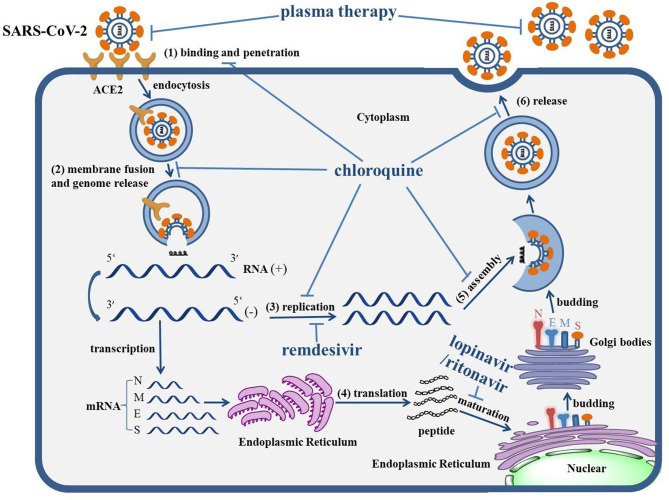Graphical Abstract.
The life cycle of SARS-CoV-2 and the mechanism of actions of anti-COVID-19 drugs. The life cycle of SARS-CoV-2 in host cells includes: (1) Binding and penetration: SARS-CoV-2 binds to the ACE2 receptors on the cell membrane and entry into host cells through endocytosis. (2) Genome release: the genome of SARS-CoV-2 will be released following the process of membrane fusion. (3) Genome replication: the positive (+)-sense genomic RNA directs the synthesis of negative (−)-sense RNA, which can act as the template to synthesize the RNA chain of progeny virus. (4) Protein biosynthesis: negative (−)-sense RNA acts as a template, with mRNAs transcribed to direct the protein biosynthesis of SARS-CoV-2 via the translation process in the cytoplasm. (5) Assembly: the genomic RNA and virion proteins are reassembled to form a mature virion. (6) Release: the progeny viral particles are released through exocytosis. The levels of actions of corresponding drugs were also depicted. Remdesivir can inhibit the replication of the SARS-CoV-2 genome. The combination of lopinavir/ritonavir can block the maturation of protein. Chloroquine virtually interrupts the whole life cycle of SARS-CoV-2. The antibody within plasma can directly neutralize SARS-CoV-2.

